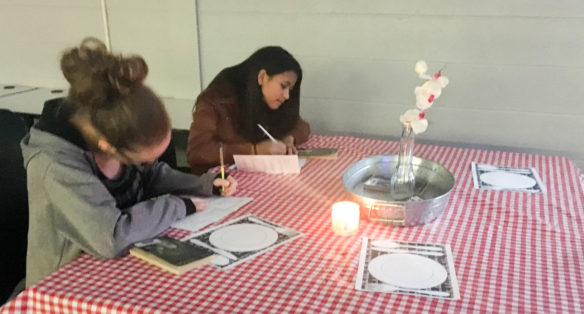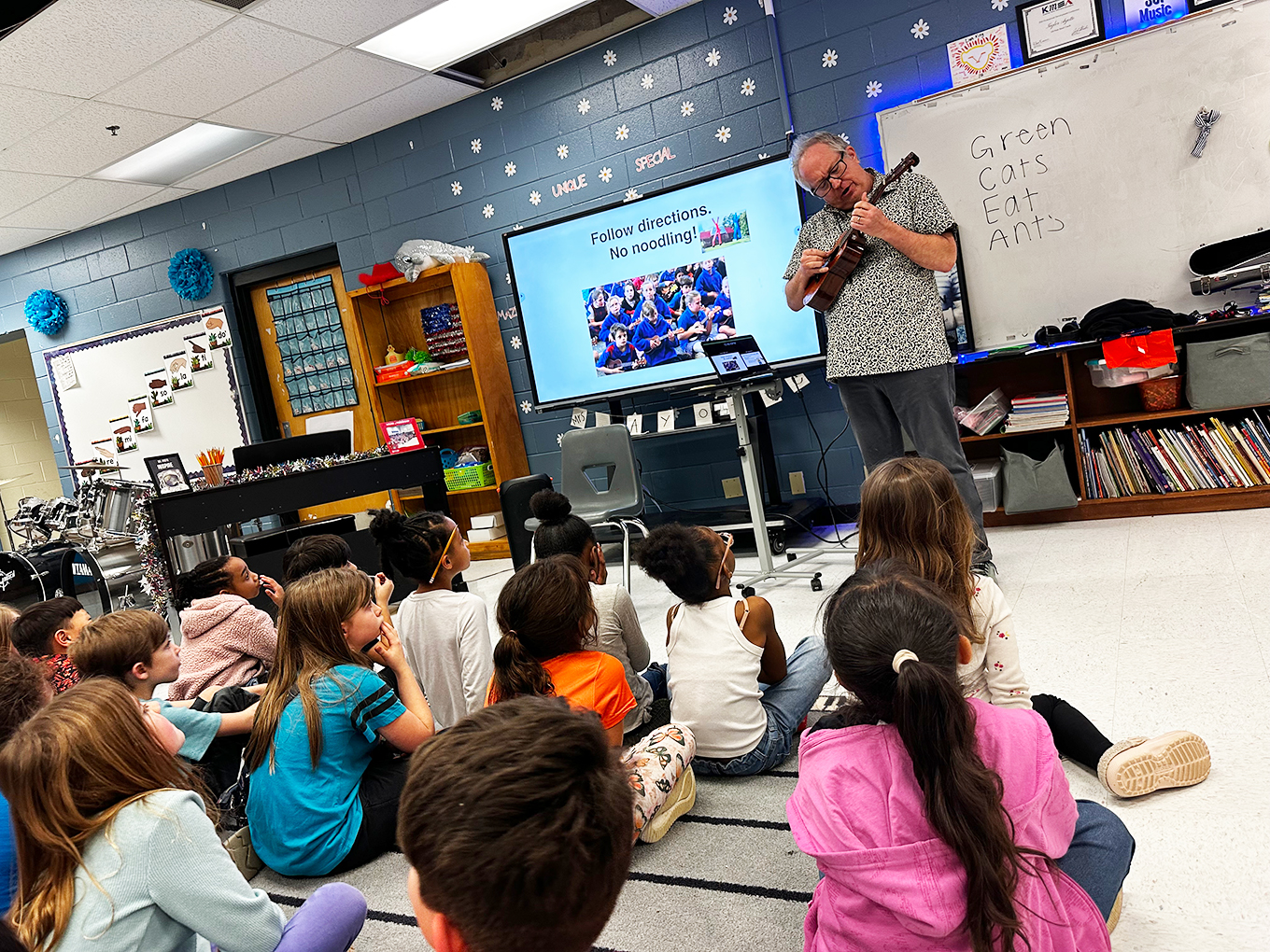
Stephanie S. Luckett
How do we compete?
Fortnite. Snapchat. YouTube. These are just a few of the many, many distractions that cause my middle schoolers – as well as yours – to check out of reading and check into apathy and disinterest. Once they huddled around their ABC rug attentively with their kindergarten teacher waiting to hear Clifford’s next big adventure. Now, they want to huddle around their phones to see what antic their favorite vlogger did today or cackling at the latest meme.
How can I, a middle school teacher, even try to compete with this pop culture-palooza?
Then there’s the elephant in the room – the profoundly real challenges my students face every day. Some ponder if their absent dad will show up to disrupt whatever stability they’ve managed to build in his absence. Others wonder what, if anything, they will have for dinner.
Yet our content is abundant, with richly told narratives that can help our students understand the world and themselves. I have discovered a couple of tools that will help get our distracted middle-schoolers to see the relevance of school.
THE POWER OF CHOICE
Choice is revolutionary. Choice sounds simple, but sometimes simple can be complicated. Isn’t it human nature to want to do something when it is our choice?! Well, of course, it is. We check into choice and check out of coercion.
I decided to give my students choice in what they read, but how could I possibly give more than 100 students choice? Who has that kind of classroom or school library? Well, I certainly didn’t, but I did have access to multiple copies of a few novels, free PDFs and some books checked out from my local public library.

Owensboro Middle School 8th-grade language arts teacher Stephanie S. Luckett developed the idea of a tasting menu to get her students excited about reading books. She set up a cafe in a classroom and students had the chance to sample books before deciding which one they wanted to read.
Photo submitted by Stephanie S. Luckett
These resources helped me transform my school’s multipurpose room into The Book Tasting Cafe, with red checked tablecloths, candles, platters and a crackling fire projected on the wall. Students “tasted” each of eight books while commenting on the novels on their “menus.”
At the end of the book tasting, students ranked the novels and I was able to give the majority of the students their first choice. All of these novels had a common theme and tied into the unit’s essential question, “When is it right to take a stand?”
At the end of the book tasting, my students completed a reflection that helped this reading endeavor gain momentum. Many students commented that they loved picking a novel instead of me picking one for the entire class. With our little book appetizers, they couldn’t wait to get their novels in hand the next day and dive into their books.
SPEAKING THEIR LANGUAGE
Our tech-savvy students love to post their selfies, pictures of their new shoes and their food, so if you can’t beat them, join them. After some help from my amazing school tech department, I set up a Google Plus Community for each book with all the privacy settings turned on. The only people who could see our posts were the few students reading that particular novel and me.
Every other day we completed our digital discussions; each time beginning with a post from me that was driven by our selected standards for the unit. The requirements were that each student had to comment under my post, as well as comment on another student’s post.
My students became active citizens in their learning and in our classroom. The community building and collaboration was an unexpected surprise in this process. Students jumped on at home and random times throughout the day to see what others were posting. I would often hear, “I hadn’t thought about it like that.” These comments are evidence of their active learning, which is exactly what I had hoped for with this technology.
Here are some of the posts I used to begin our digital discussions:
- What does my main character want? In other words, what is their story goal? Who or what opposes my main character as they work to achieve their goal?
- What’s this book’s greatest strength? That is, what made it good?
- What is this book’s biggest weakness? That is, what made it not so good?
- Internal conflicts build narrative. They are the mental, emotional or spiritual struggles a person faces, basically character vs. self. Explain an internal conflict that one of your characters is grappling with in your novel. How has (character name) changed from the beginning of the book until now? And, what caused that change in him?
LESSONS LEARNED
Not everything went smoothly with the first digital discussion. We had to have a discussion about quality comments. Students had to learn to avoid comments like, “Good,” “I agree,” or “great post.” During class as students were posting, I also was online posting and commenting with them. In the evenings, per true teenage mentality, they would jump on, so I checked our communities then as well to keep the conversation going and maintain appropriate content if necessary.
As students would comment, I would offer a nugget of knowledge or deliberate discernment that would continue the deeper thinking or connections, as well as model comments for my students who needed the scaffolding of the posts.
For example:
- I loved how you explained how the character …
- I couldn’t believe that (the character) …
- I really hadn’t thought about seeing it that way. It made me see …
- You know I felt the same way when …
- What do you think will happen next?
What did I notice? The students who commented with voracious appetites were not the students who typically engaged in our classroom discussions. And students who typically were disengaged were joining in, too.
We completed eight digital discussions, dividing each novel into eight sections. Each of the Google Communities had students from different classes, which made for more literary diversity. My students who were absent still joined in the discussion as we are a one-to-one district. Digital discussions were technically assigned every other day, but students often chimed in more than they were required to.
REFLECTION
Do know what really surprised me about this project? I had 85 students in eight novels with eight Google communities, and I only had to delete four posts. Students were so engaged that I was not worried about the typical off-task classroom behavior.
Ultimately, I had to turn these discussions into a grade for accountability. The more we posted, it did get a little difficult to juggle. Using the Infinite Campus blank roster, I documented when each student posted. I also assigned extra credits to students who posted above and beyond the requirement.
Will I do this project again? Yes, I will. I loved it! It removed me as the giver of knowledge and it put us all on an equal playing field where we connected and related through the characters of these novels. Choice and technology helped make students stakeholders in their own education.
Stephanie S. Luckett teaches 8th-grade language arts at Owensboro Middle School (Owensboro Independent). She is a member of the Classroom Teachers Enacting Positive Solutions, and is a National Board Certified Teacher. She earned her middle grades education degree from Kentucky Wesleyan College and received her master’s and gifted education certification from Western Kentucky University. She has spent 25 years in the middle school classroom.




Leave A Comment